52 Weeks of Inspiring Illustrations, Week 9: Piero Valeriano’s menagerie of symbols (Hieroglyphica, 1556)
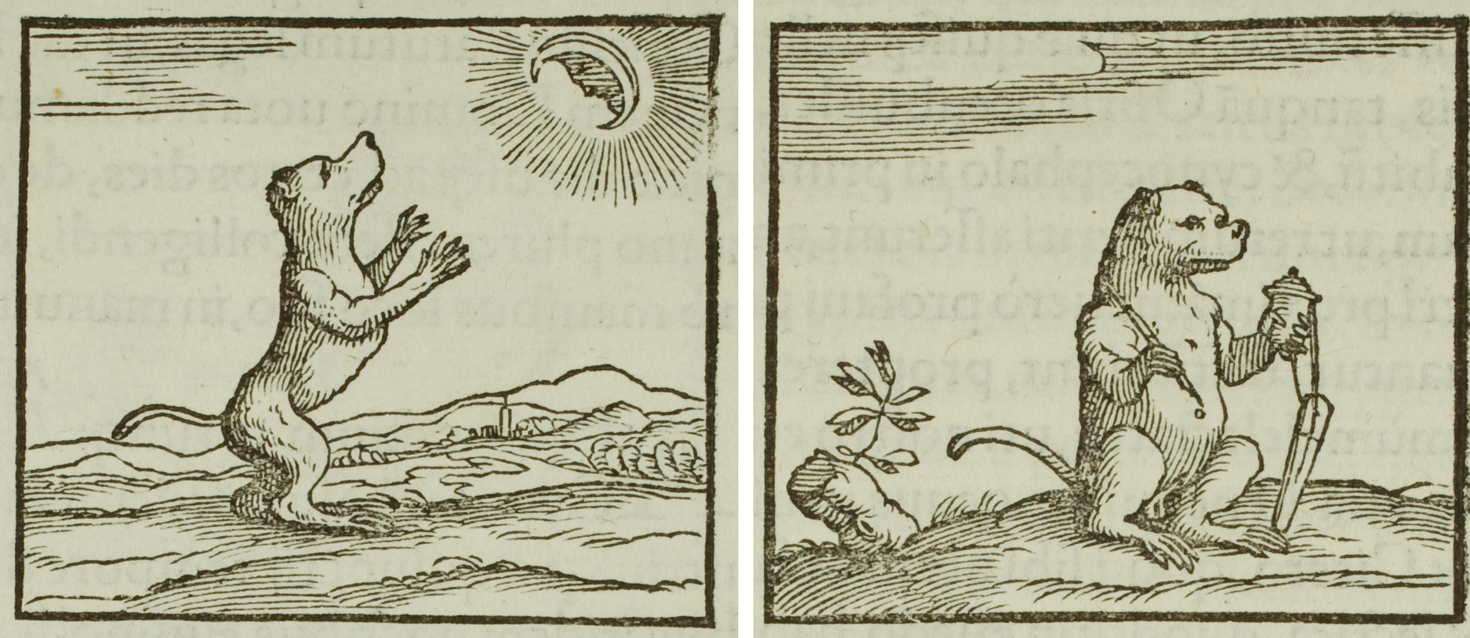
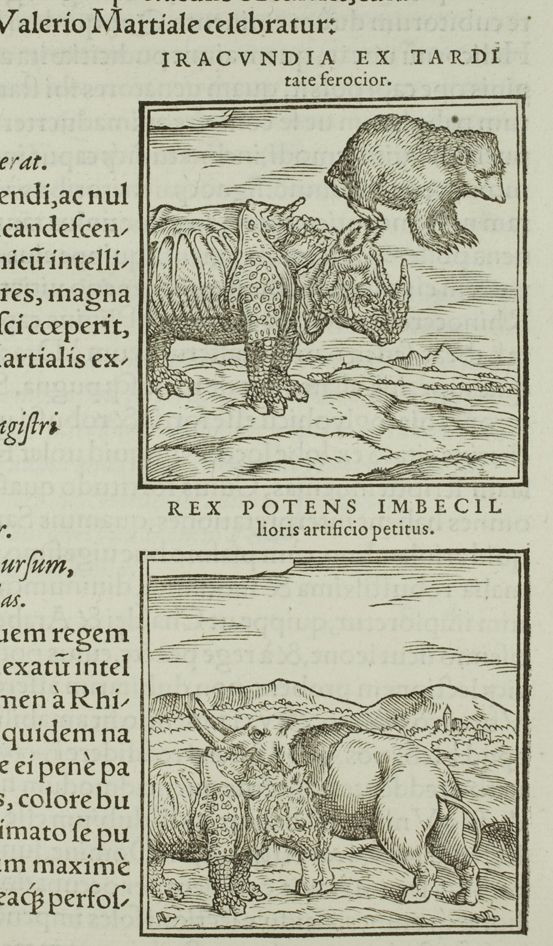
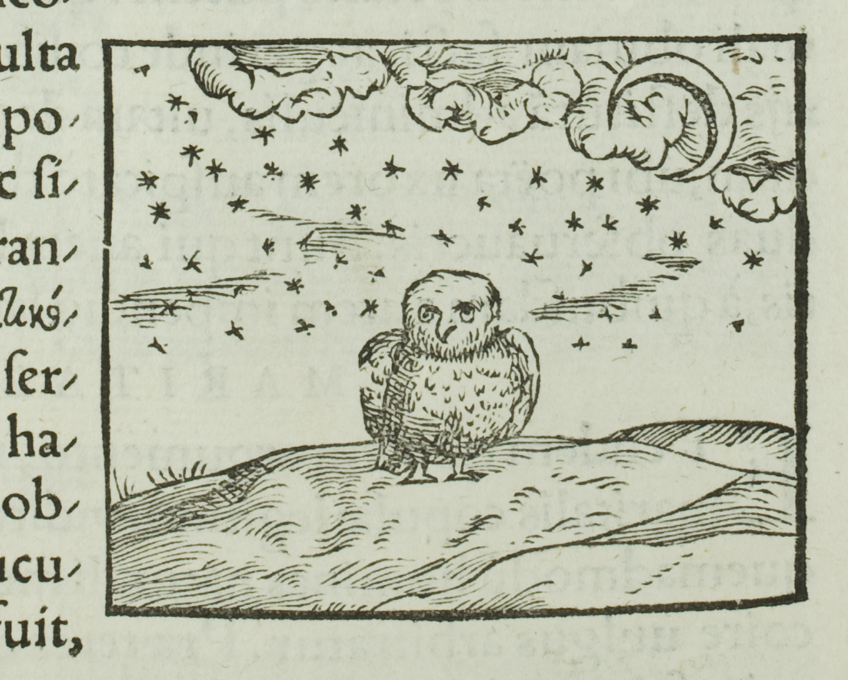
This week’s illustration post comes straight out of a very close-knit circle of Renaissance Italian humanists working in the 16th century, however the story begin in 15th century Greece. Cristoforo Buondelmonti, an Italian geographer and monk from Florence, visited many of the Greek islands between 1414 and 1430. In 1422, during one of his returns to his home, Buondelmonti brought back the only known manuscript copy of Horapollo’s Hieroglyphica, a compendium of interpretations of hieroglyphs. Previously, Horapollo’s work was known only by references in a 10th century Byzantine encyclopaedia called the Suda. The manuscript of Hieroglyphica (which is now kept in the Biblioteca Medicea Laurenziana) was very popular amongst a very small circle of Florentine Humanists, which included Aldus Manutius and Giorgio Valla. In 1505, Manutius included Valla’s Greek translation of Hieroglyphica in a collection of fables and stories.
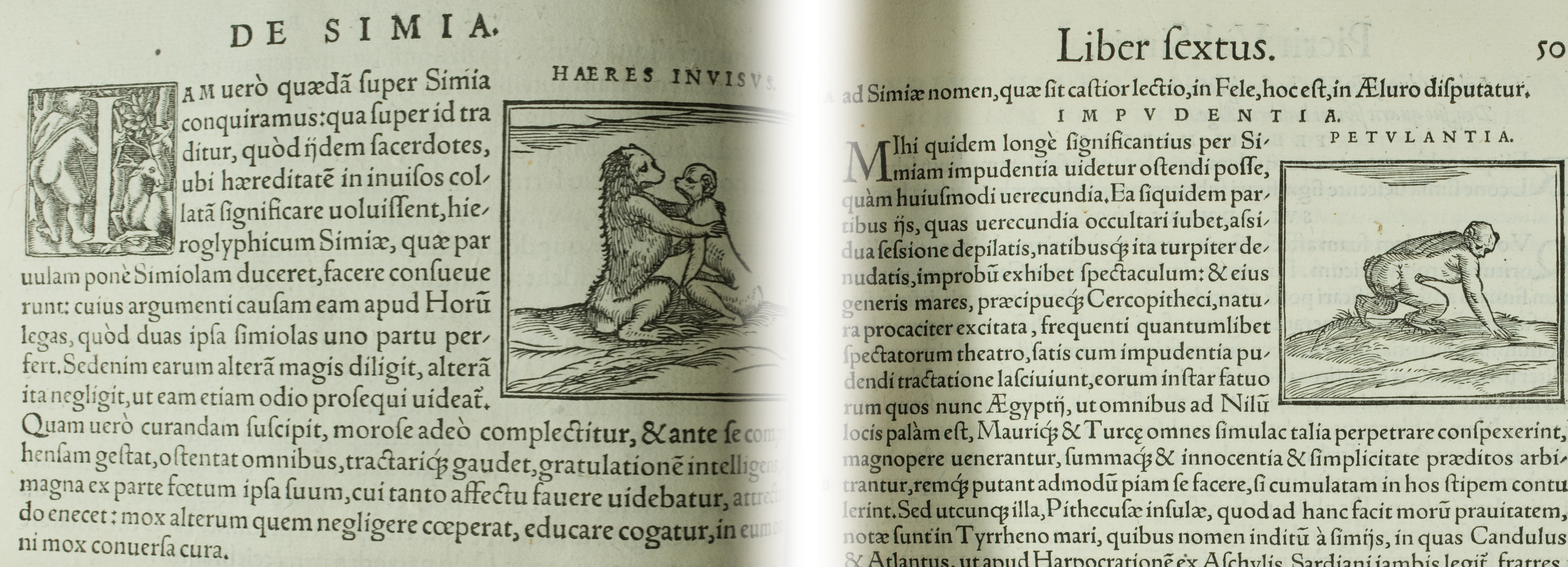
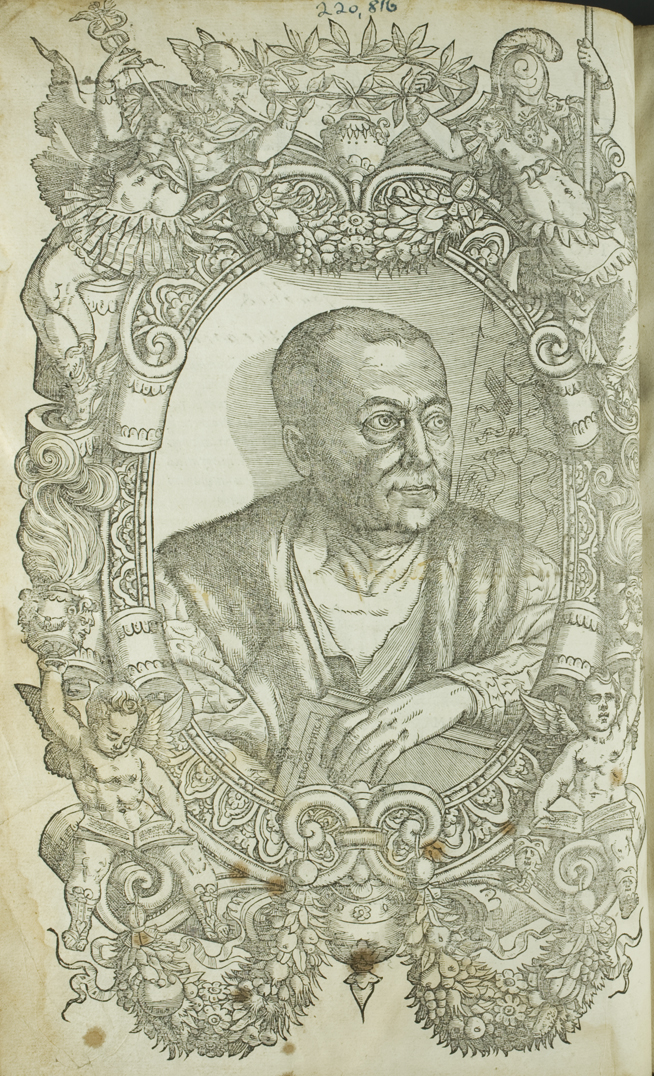
Piero Valeriano, the author of this week’s illustration post, was a humanist scholar tutored by Giorgio Valla and introduced by his uncle to Aldus Manutius. Valeriano travelled to Rome in 1509 and was introduced to Cardinal Giovanni de’Medici, later Pope Leo X. After gaining favour and protection with the Medici family, Valeriano took holy orders and remained connected to the major humanists of the time. He published several works during this time and was a tutor to the Medici family, but in the late 1530s Valeriano returned to his home town of Belluno and published two works on mythology: Amorum quinque ( 1549) and Hieroglyphica (1556).
Valeriano’s Hieroglyphica was in many ways a continuation of his tutors’ works, and it does include the original text of Horapollo translated into Latin. However, Valeriano combined the knowledge gained by Horapollo and his studies (based on over 400 other Greek and Latin sources) and produced the first Renaiisance dictionary of symbols and hieroglyphs. This work was divided into sixty books, each focused on a specific symbol and dedicated to various members of the Italian humanist circle (Achille Bocchi, Paolo Giovio, Giorgio Valla, Jacopo Sadoleto, Giles of Rome, Romulus Amaseo, Vittoria Colonna, Reginald Pole, Antonio Agustin, &c.).
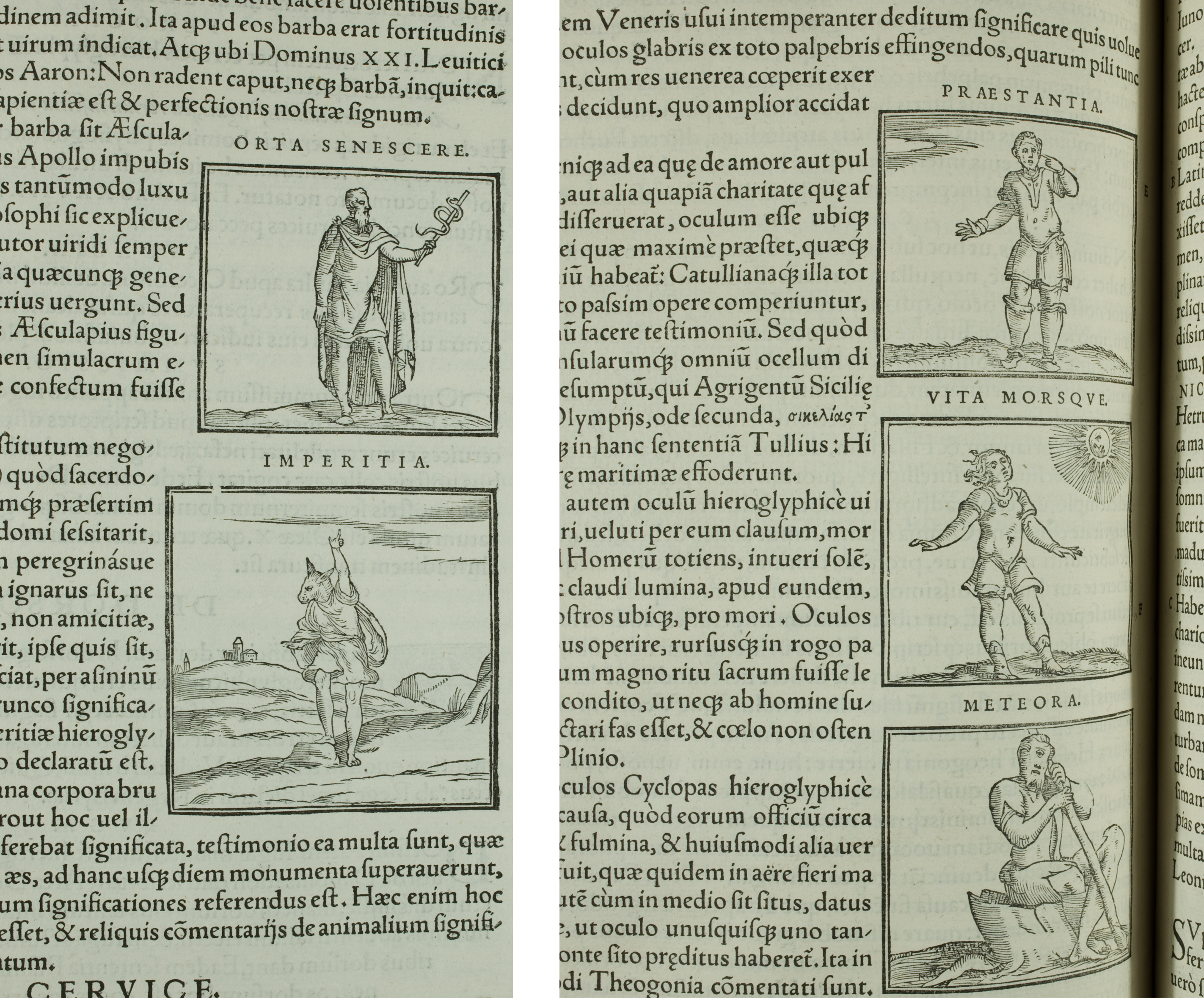
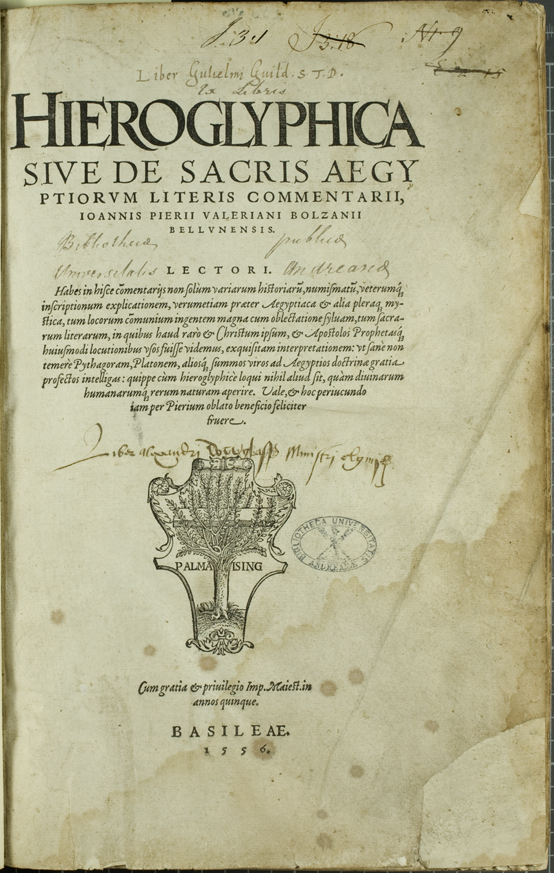
Hieroglyphica was printed in folio size and features an amazing collection of woodcuts illustrating Valeriano’s text. These engravings are unattributed; however, they show similarity stylistically to other German and Swiss artists of the time. Some of the creatures and scenes depicted are haunting and strange and show that the Renaissance humanists’ interests could still be piqued by the old medieval curiosities and explanations of the unknown. In fact, this collection is similar in many ways to the grand medieval bestiaries and world chronicles.
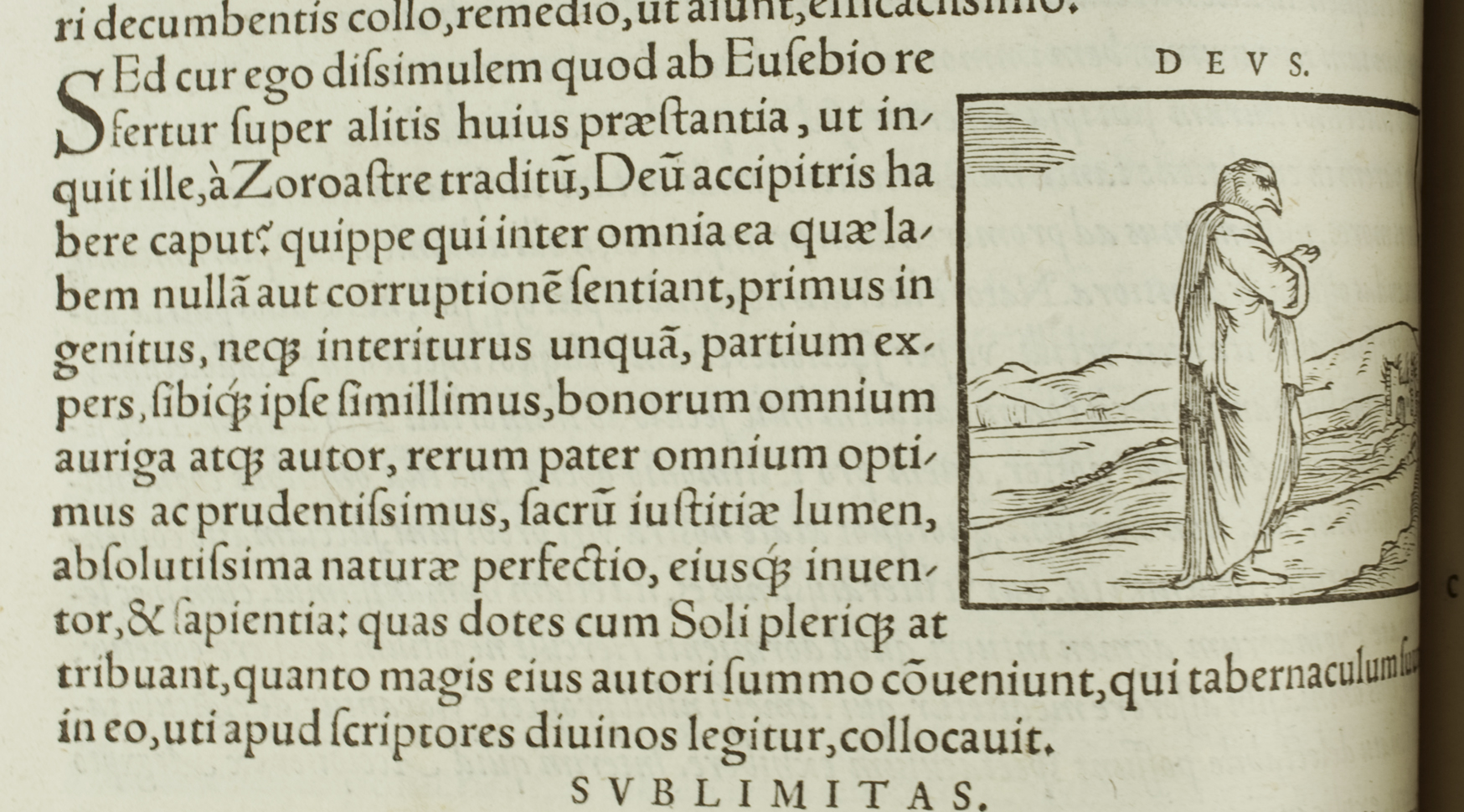
The focus of Valeriano’s work was much broader than his predecessors: it includes not only hieroglyphs and emblems, but also elements drawn from classical Greek myth, the Latin Cabala, Hermeticism and Christian religion. The first edition of Hieroglyphica was printed in Basel, 1556, two years before the death of its author, and was very popular: it was reprinted in Latin 7 times before the late 17th century and also translated into French and Italian. In total, Hieroglyphica was reissued 34 times before the 19th century.
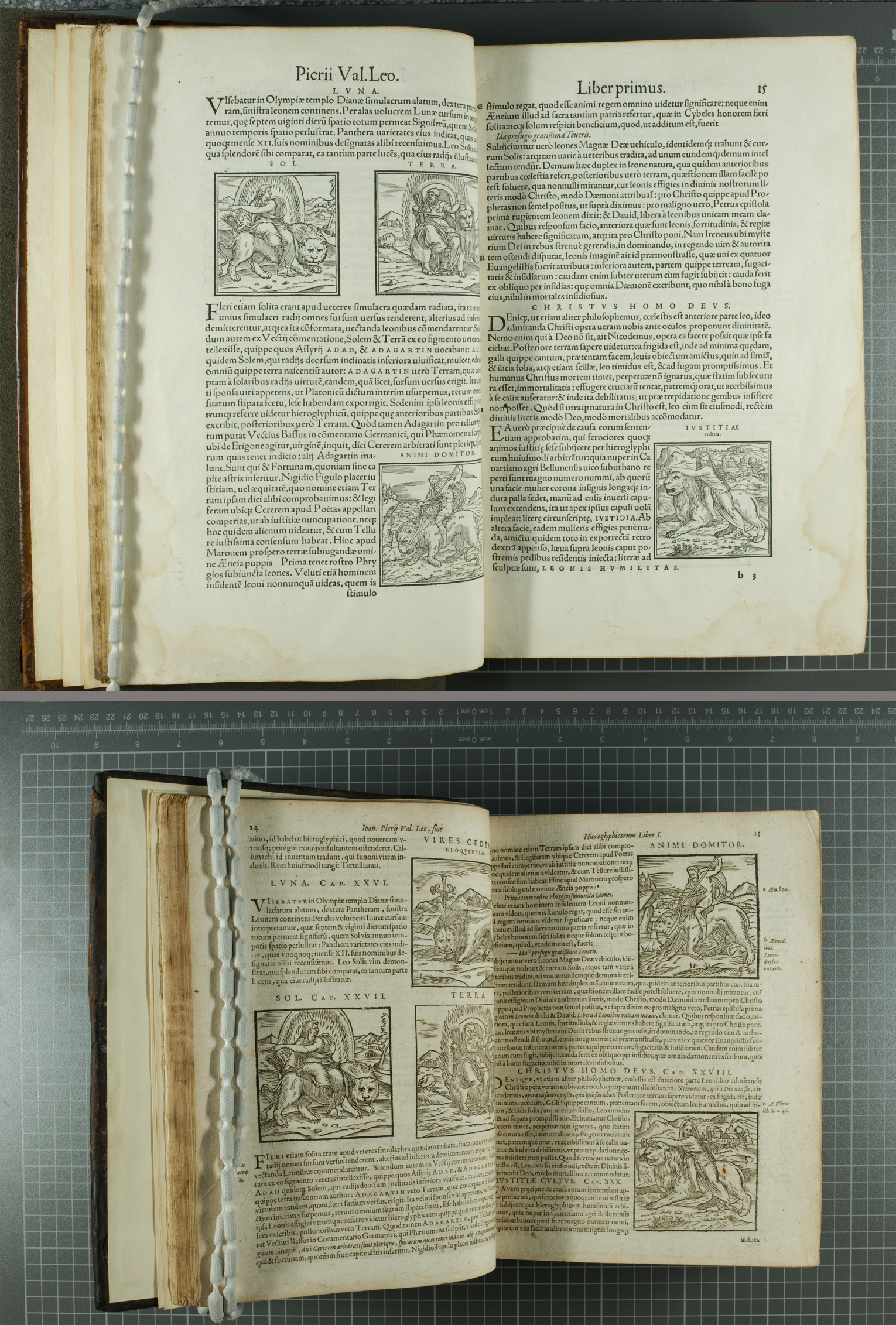
St Andrews is lucky enough to not only have the first edition of Valeriano’s work, but also an early 17th century edition from Frankfurt. The first edition was given to St Andrews by William Guild in 1657. The 17th century edition, a smaller, more portable version, still features the same woodcuts as the 1556 first edition. It was given to the library of St Leonard’s College in 1620 on behalf of Sir John Scot of Scotstarvit by a “Mr A. Aytoune”.
–DG
Reblogged this on Shelf Fulfillment.
[…] This week’s illustration post comes straight out of a very close-knit circle of Renaissance Italian humanists working in the 16th century, however the story begin in 15th century Greece. Cristoforo... […]